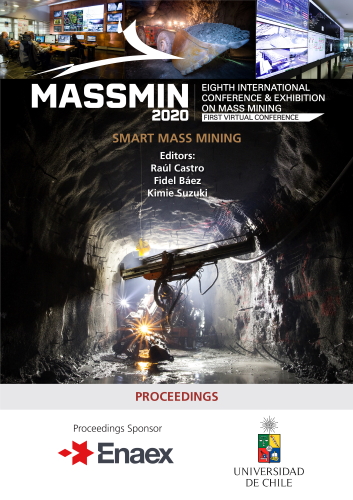Telemetry: connectivity and productivity in real time - project implementation guide

|
Authors: Marin, R |
This paper is hosted with the kind permission of Lulea University of Technology, International Conference & Exhibition on Mass Mining, 2024.
DOI https://doi.org/10.36487/ACG_repo/2063_102
Cite As:
Marin, R 2020, 'Telemetry: connectivity and productivity in real time - project implementation guide', in R Castro, F Báez & K Suzuki (eds), MassMin 2020: Proceedings of the Eighth International Conference & Exhibition on Mass Mining, University of Chile, Santiago, pp. 1359-1374, https://doi.org/10.36487/ACG_repo/2063_102
Abstract:
Over the past decade, the mining industry has faced increasingly complex global changes and operating conditions. These situations have led to changes in strategy and altered courses of action, and necessitated the adoption of new business and operational models. Globalization, the opening of new markets, volatility in commodity prices, ever deeper mines, greater travel distances and cost increases, coupled with more extreme operating conditions and ever-lower average ore grades, have generated a challenging environment. In order to remain competitive and viable it is imperative for the mining industry to act quickly and adapt to new demands. According to McKinsey (2015) research, worldwide mining operations are as much as 28 percent less productive today than a decade ago. It is a fact that we are now experiencing the fourth industrial revolution (Industry 4.0) which has a general impact on all industries and levels within a company. It is ushering in new stage of connectivity between the physical and digital worlds of intelligent devices (IoT), large volume data generation and management (Big Data- Cloud Computing), autonomous systems and equipment operation, and AI (artificial intelligence/machine learning) for dynamic analysis. Digital transformation is no longer the privilege of a few, but a necessity for all in order to be competitive, and mining is not an exception. One area of recent exponential growth is telemetry, which allows mines to have equipment connectivity in real-time. With telemetry, technology critical operational data can be recorded and then used for accurate process analysis, optimal fleet management and mining asset maintenance. Telemetry has great potential to innovate mining, but it is up to the industry to take the initiative and embrace it for more efficient processes, and to make more effective decisions and increase productivity. This document aims to share guidelines and practical experiences for implementing telemetry as a tool. Further, it will demonstrate some of its benefits for fleet equipment management in underground mining operations, and show how it can extend interoperability concepts in comprehensive asset management under the same management platform.
References:
Global Mining Guidelines Group 2019, ‘Guidelines for Implementing Short Interval Control in Underground Mining Operations’, Retrieved from Global Mining Guidelines Group: [6 June 2019]
World Economic Forum in collaboration with Accenture 2017, ‘Mining and Metals: digital transformation and the industry’s ‘new normal’, , [January 2017]
© Copyright 2025, Australian Centre for Geomechanics (ACG), The University of Western Australia. All rights reserved.
View copyright/legal information
Please direct any queries or error reports to repository-acg@uwa.edu.au
View copyright/legal information
Please direct any queries or error reports to repository-acg@uwa.edu.au
